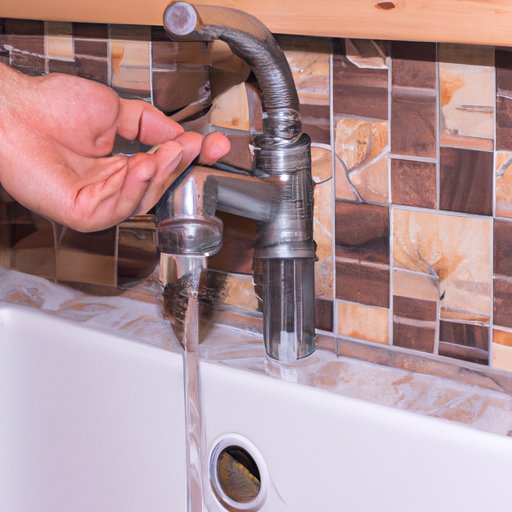Introduction
Water leaks can occur at any time, and detecting them early is crucial to prevent extensive damage to your home, property, and finances. Slow leaks can be insidious and challenging to detect, making them even more dangerous. This article will provide a comprehensive guide on how to tell if your water is leaking slowly, the symptoms to look out for, how to monitor your water usage, inspect your appliances, DIY leak tests, when to call a professional, and prevention measures.
Symptoms to Look Out For
Sometimes, slow leaks may not be noticeable until they have caused significant damage. However, there are several signs homeowners should look out for which include:
- Mouldy or discoloured walls or ceilings
- Peeling or bubbling wallpaper or paint
- Foul or musty odours in the house
- Wet or damp patches on walls, floors, or ceilings
- Sudden increase in water bills without changes in water usage habits
Monitoring Your Water Usage
Regular monitoring of your water usage is vital in detecting slow leaks. One way to do this is by checking your water usage frequently and taking note of any unusual changes. You can also use a water meter to track your usage, making it easier to detect any sudden spikes. The water meter can be checked before and after a few hours of water disuse, such as before and after going to bed or leaving for work.
Inspecting Your Water Appliances
Conducting a regular check-up on all of your water appliances is necessary, especially if they are older or faulty. Common areas to inspect for leaks include the washing machines, toilets, taps, pipes under the sink, and the water heater. Watch out for any signs of wear and tear, rust, corrosion, or damage, which could lead to leaks. Ensure fittings and connections are tight, and replace any old or worn-out parts promptly.
DIY Leak Tests
Several DIY methods can help detect slow water leaks. They include:
- Dripping faucet test: Close all faucets and water sources in the house and check your water meter. If the water meter still indicates water usage, then there’s a leak.
- Food colouring test: Put a few drops of food colouring in your toilet tank and wait for thirty minutes or so. If the colour leaks into the bowl, you have a leak.
- Checking water levels: Fill your pool or any other appliances with water and mark the water levels with tape. Check again after a few hours, and if the water level has changed without use, there’s a leak.
When to Call a Professional
Once you’ve tried all the DIY methods, and you’re still having issues detecting the leak, it’s time to call in a professional plumber. Choose a reputable and licensed plumber with experience in leak detection and repair. They will use advanced tools such as electronic leak detection, thermal imaging cameras, or a sound amplifier to identify the source of the leak accurately. Don’t wait until the damage is irreparable, as this will cost you more in the long run.
Prevention Measures
Prevention is always better than cure. Here are some tips to prevent slow water leaks from occurring:
- Regular checks and maintenance of all water appliances
- Replacing old or worn-out parts and fittings
- Ensure all taps and water sources are turned off when not in use
- Install a water leak detection system
- Insulate pipes in crawl spaces or attics to prevent bursts during cold weather
Conclusion
Water leaks can cause significant damage to your property and finance, and detecting them early is vital. Be vigilant and lookout for signs of slow leaks, monitor your water usage, inspect your appliances regularly, and perform DIY tests to detect leaks. If all else fails, choose a reputable plumber to detect and repair the leak. Preventive measures such as regular maintenance and vigilance can save you from costly repairs in the future. With these tips, you’re one step closer to detecting and preventing slow water leaks that could wreak havoc in your home.
